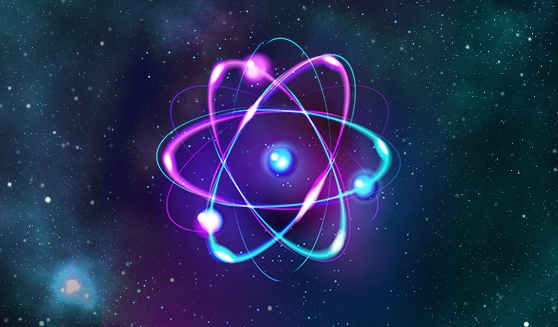
Tech careers with impact: The power of investing
If you’ve ever thought about becoming a tech investor, read this – learn why investors are the quiet force shaping the future of the industry.


Nuclear fusion – which mimics the power of the sun and stars — is no longer science fiction, and could emerge as a viable energy source in less than a few decades.
Nuclear fusion is a complex technology that mimics the energy produced by the stars. The technology has been painstakingly worked on for decades, but it has only now recently gained currency as the world looks to decarbonize its energy sources.
The industry has attracted some of the world’s innovative investors, even as commercial usage of the technology remains years away.
But with governments pledging to reduce their net carbon emissions before 2050 and the world on a quest to source new energy sources such hydrogen, geothermal, nuclear, wind and solar, the nuclear fusion industry has also gathered momentum.
“Everything has changed. Five years ago, only one company had raised more than 100 million dollars, and everybody else was struggling to get money. Today, the same company has raised closer to a billion dollars, and other companies have raised more than 100 million dollars. It’s a whole different world,” Malcolm Handley, a venture capitalists said during a webinar hosted by the International Atomic Energy Agency.
Indeed the surge of investments in as many as 35 nuclear fusion companies, has meant the technology may no longer be 30 or 50 years away. Together they have raised a combined $1.8 billion, according to a UK Atomic Energy Authority survey.
The survey also found that 71% of companies believe a 2030s target is achievable for the clean energy technology, while 20% believe that it won’t be ready until the 2040s or 50s.
“There is new confidence that fusion as a source of energy is becoming a reality, and one clear indication of this is the flow of private capital into it. This is happening not only in USA or UK, but also in Europe, China, Japan, Australia…” said Sehila Gonzalez de Vicente, nuclear fusion physicist at the IAEA. “Similarly to the speedy development of the COVID-19 vaccine, when a technology is urgently needed and attracts investment and international collaboration, it can happen much sooner than predicted.”
General Fusion, a Canada-based company backed by Amazon.com’s Jeff Bezos, for example, is set to build a large-scale nuclear fusion demonstration plant in the U.K.
General Fusion says the energy produces zero carbon emission and just one kilogram can power 10,000 homes for one year and replace 55,000 barrels of oil, 6 million kilograms of natural gas, or 10 million kilograms of coal.
“Fusion powers the sun and the stars, where gravity compresses hydrogen gas to the temperatures required for fusion. The challenge for fusion energy is how to create those conditions on Earth in a controlled way that can be used to provide power,” General Fusion noted.
The most practical fusion reaction uses isotopes of hydrogen named “deuterium” and “tritium”. These can be extracted from seawater and derived from lithium, both in abundant supply.
“There is enough fusion fuel on earth to power the planet for hundreds of millions of years,” the company said.
General Fusion is just one of the many companies looking to tap the powerful energy source.
In France, as many as 35 nations are behind the development of the International Thermonuclear Experimental Reactor, featuring the world’s largest tokamak, a magnetic fusion device designed to prove the feasibility of fusion as a large-scale and carbon-free source of energy based on the same principle that powers the Sun and stars.
“The tokamak is an experimental machine designed to harness the energy of fusion,” according to ITER, being built at a cost of nearly US$25 billion. “Inside a tokamak, the energy produced through the fusion of atoms is absorbed as heat in the walls of the vessel. Just like a conventional power plant, a fusion power plant will use this heat to produce steam and then electricity by way of turbines and generators.”
Once complete, ITER will be have the capacity to produce 500 megawatts of fusion power.
Although this will be on the scale needed for a power station, there are still some technological issues to address before a commercial power plant can operate. A prototype of a fusion reactor (DEMO) is expected to be built by 2040, according to the International Atomic Energy Agency.
A key advantage of nuclear fusion over the more conventional nuclear energy, achieved through nuclear fission, is that it does not create nuclear waste.
“Nuclear fission power plants have the disadvantage of generating unstable nuclei; some of these are radioactive for millions of years,” according to the International Atomic Energy Agency. “Fusion on the other hand does not create any long-lived radioactive nuclear waste. A fusion reactor produces helium, which is an inert gas.”
While Middle East nations have not considered nuclear fusion as a possible energy source, some of the region’s more enterprising sovereign wealth funds or investment houses will soon be eyeing opportunities to invest and get a foothold in the new energy source. ©

If you’ve ever thought about becoming a tech investor, read this – learn why investors are the quiet force shaping the future of the industry.

Tech generalists will enable emerging technologies to integrate across industries and societies in meaningful ways. We still need specialists – but we also need big-picture people.

Discover three tech sectors facing a talent shortage this year. Could you find your ideal role in a high-demand sector like cybersecurity, cloud computing, or artificial intelligence?

If you’ve ever thought about becoming a tech investor, read this – learn why investors are the quiet force shaping the future of the industry.

Tech generalists will enable emerging technologies to integrate across industries and societies in meaningful ways. We still need specialists – but we also need big-picture people.

Discover three tech sectors facing a talent shortage this year. Could you find your ideal role in a high-demand sector like cybersecurity, cloud computing, or artificial intelligence?